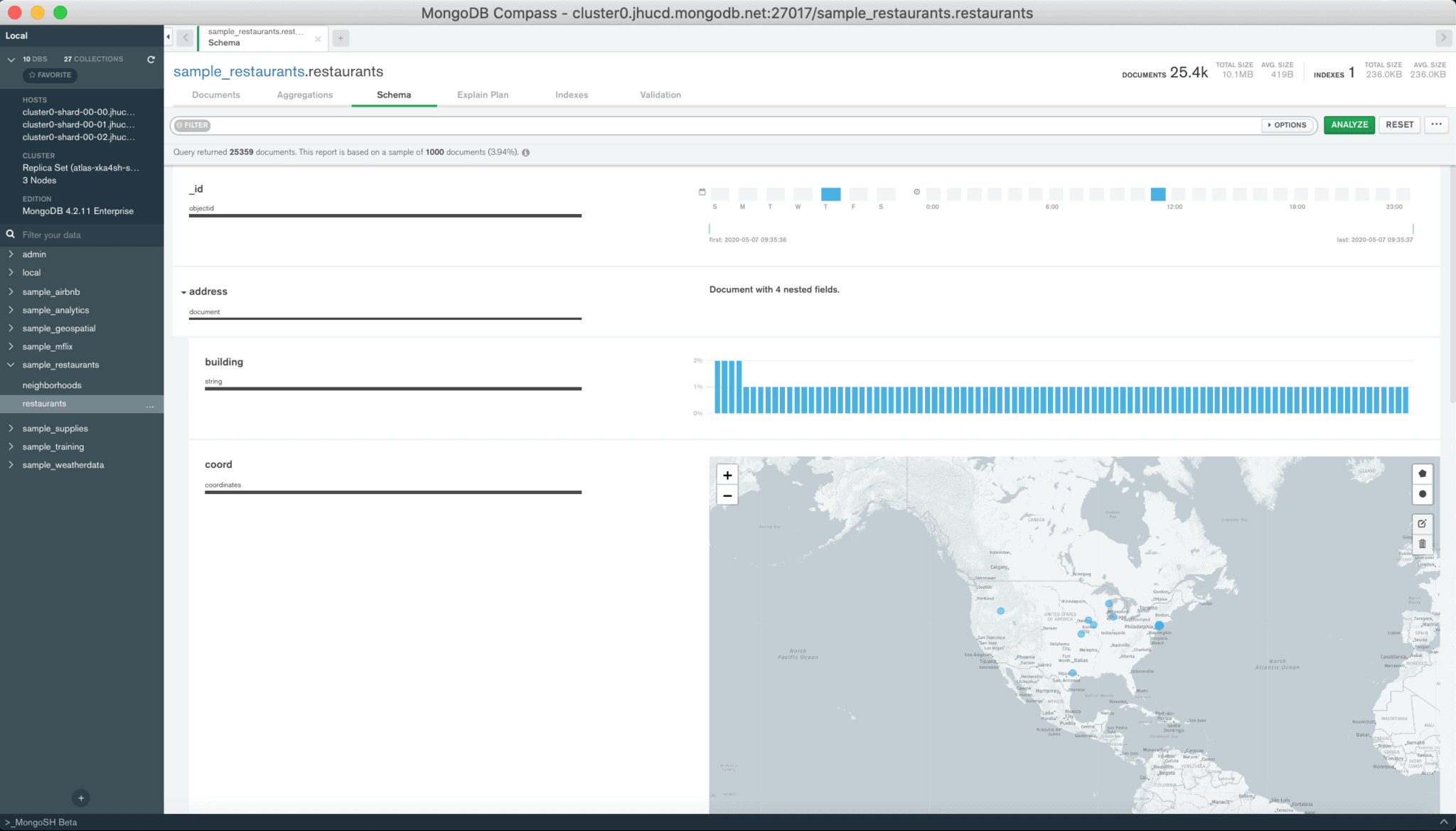
- MONGODB COMPASS CREATE NEW DATABASE HOW TO
- MONGODB COMPASS CREATE NEW DATABASE FULL VERSION
- MONGODB COMPASS CREATE NEW DATABASE MANUAL
- MONGODB COMPASS CREATE NEW DATABASE CODE
It includes all the features and capabilities that MongoDB provides.
MONGODB COMPASS CREATE NEW DATABASE FULL VERSION
Compass: It is released as the full version of MongoDB Compass.

Compass Community: This edition is designed for developing with MongoDB and includes a subset of the features of Compass.MongoDB GUI is available in the following four editions: The source repositories of MongoDB compass can be found on the following link of GitHub When we explore exploring our data in the visual environment, we can use Compass GUI to optimize performance, manage indexes, and implement document-validation.Īll the versions of MongoDB Compass are opensource (i.e., we can freely deploy and view the repositories of all MongoDB GUI versions). MongoDB allows users to analyze the content of their stored data without any prior knowledge of MongoDB query syntax. Do you work with many database types? Navicat Premium 12.MongoDB Compass is a GUI for MongoDB. If you'd like to learn more about Navicat for MongoDB, please visit the product page.
MONGODB COMPASS CREATE NEW DATABASE MANUAL
Having said that, if you don't have documents referred to in multiple collections, I would recommend sticking with manual references. DBRefs are great for linking documents located in multiple collections with documents from a single collection.
MONGODB COMPASS CREATE NEW DATABASE HOW TO
In today's blog, we learned how to create DBRefs in MongoDB using Navicat for MongoDB.
MONGODB COMPASS CREATE NEW DATABASE CODE
Here's some code that dynamically looks in the collection specified by $ref parameter (address_home in our case) for a document with the id specified by the DBRef $id parameter: Now that we've updated our an employee document to use DBRefs, we will have to alter how we go about fetching the data from the employees collection.

Let's modify Barbara Palmer's address information from last week's blog by removing the embedded fields and replacing them with DBRefs.


 0 kommentar(er)
0 kommentar(er)
